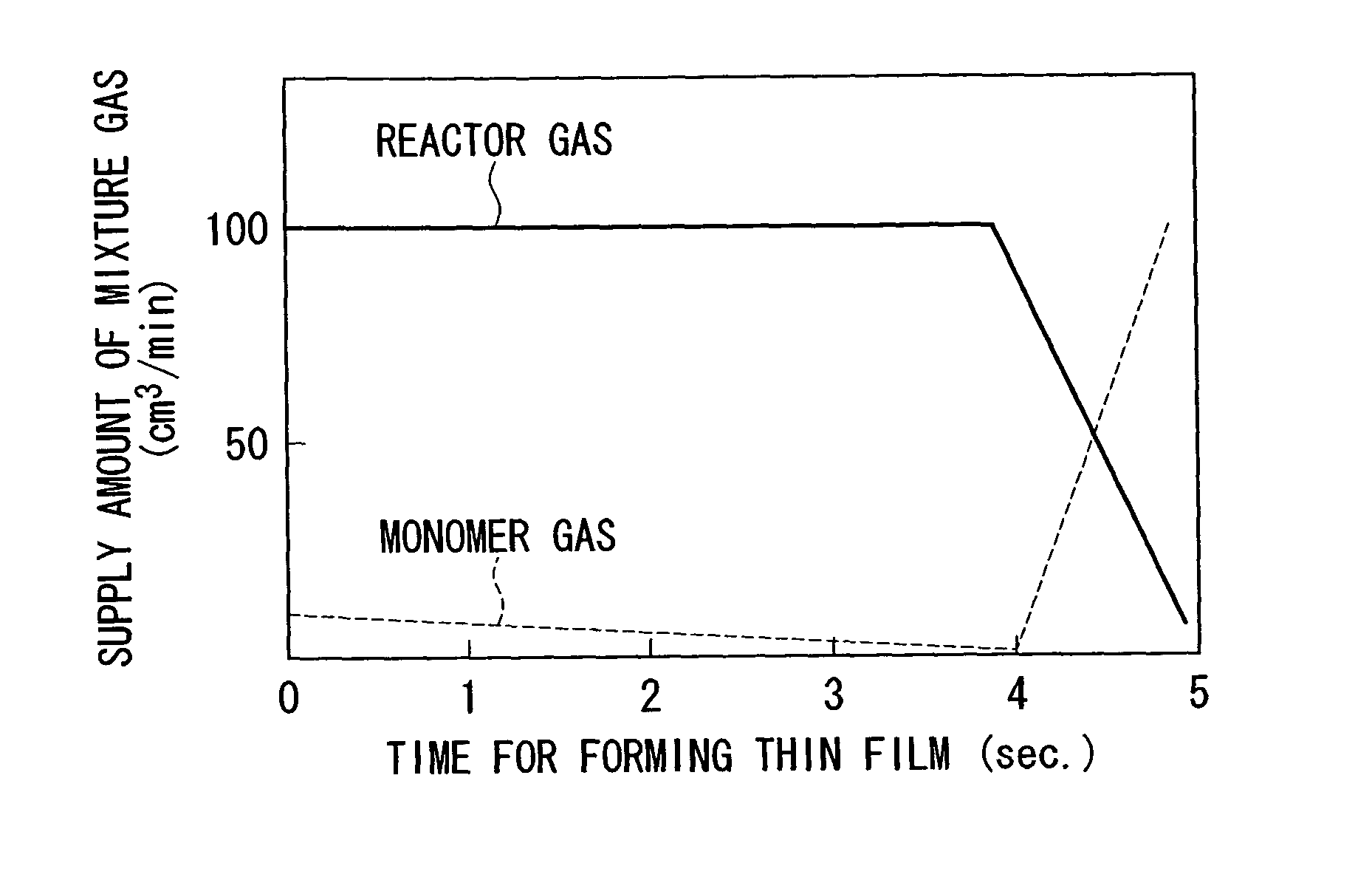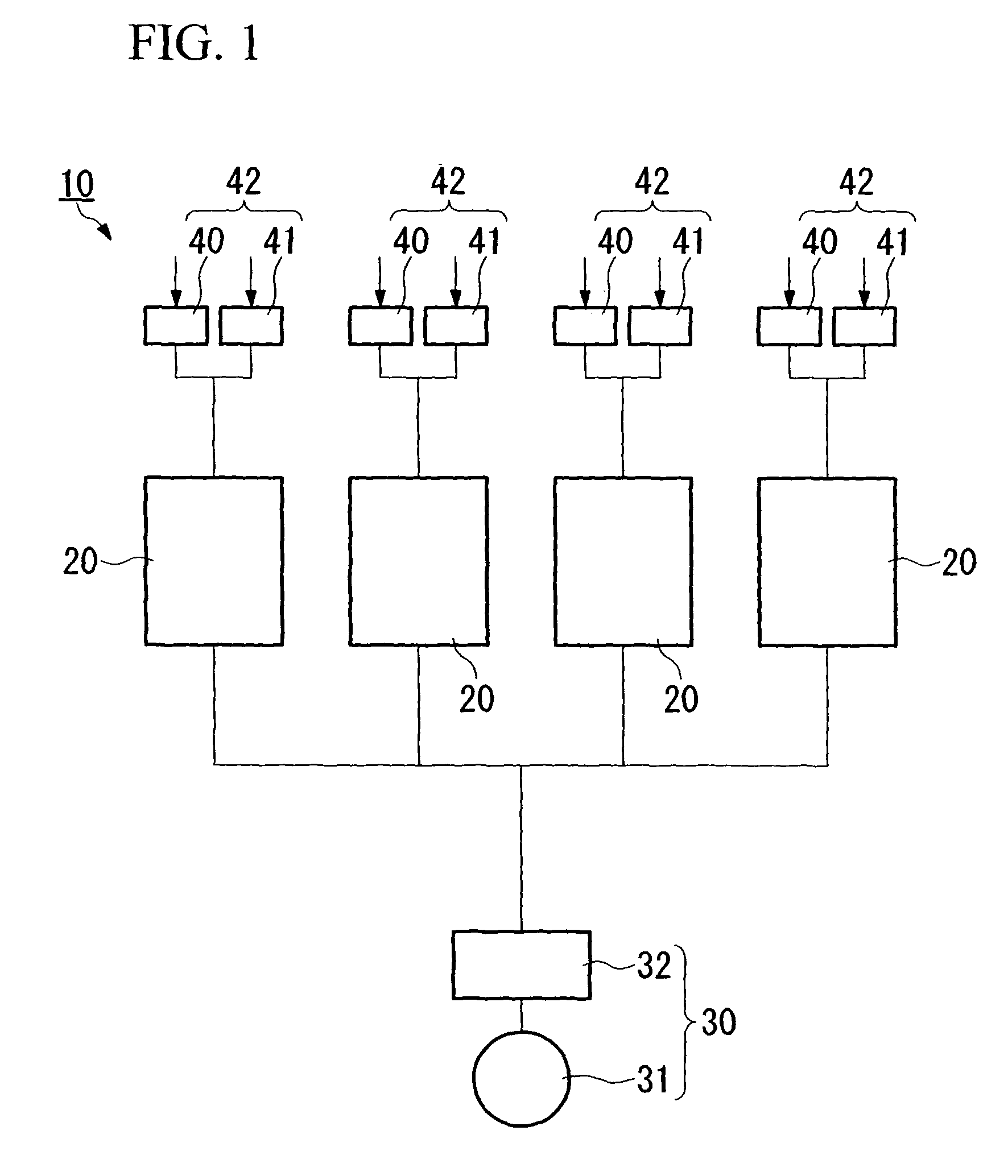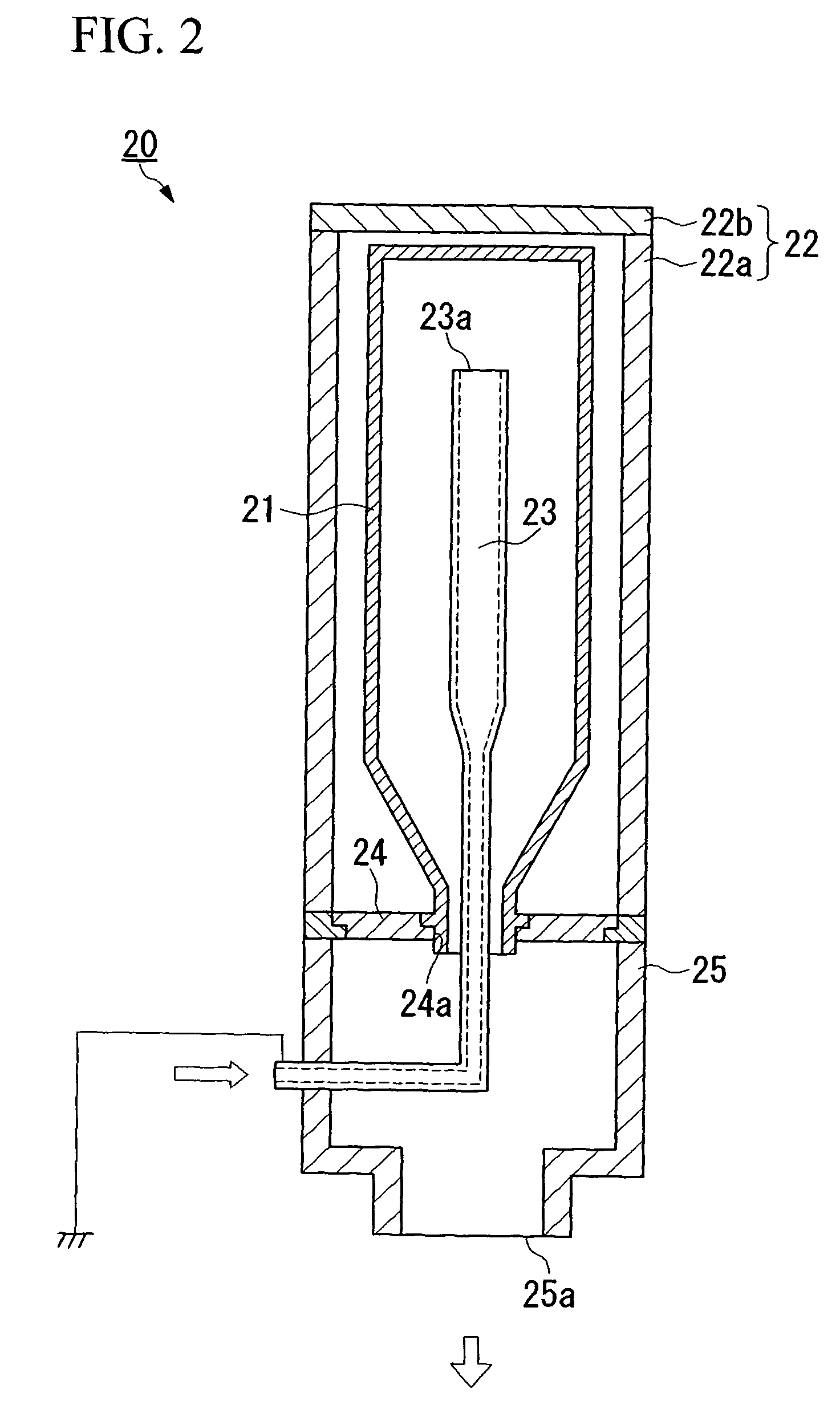Method for forming thin film, apparatus for forming thin film, and method for monitoring thin film forming process
a technology of thin film and forming apparatus, which is applied in the direction of coating, chemical vapor deposition coating, plasma technique, etc., can solve the problems of low gas impermeability, low gas impermeability, and carbon dioxide transmission, and achieve stable gas impermeability, desirable flexibility, and the effect of not changing the surface quality
- Summary
- Abstract
- Description
- Claims
- Application Information
AI Technical Summary
Benefits of technology
Problems solved by technology
Method used
Image
Examples
first embodiment
[0046]Details of a first embodiment of the thin film forming method according to the present invention are explained with respect to the examples below, in which a thin film made of silicon oxide is formed on the inner surface of a plastic cylindrical container, which has a circular cross section with a closed end.
[0047]FIG. 1 shows an example of a thin film forming device 10 which is preferably used in the present embodiment of the thin film forming method. The thin film forming device 10 is provided with four sets of thin film forming chambers 20 which enables forming of thin films in the four sets of cylindrical containers 21 simultaneously by disposing the cylindrical containers 21 in predetermined positions in the thin film forming chambers 20.
[0048]As shown in FIG. 2, each of the thin film forming chambers 20 is provided with a cylindrical high frequency electrode 22 having a circular cross section and a closed end, and a tubular ground electrode 23 of which the tip section is...
experimental example
[0087]Hereinafter, the present invention is explained specifically in detail with respect to Experimental Examples.
experimental example 1
[0088]A cylindrical container 21, which is made of polyethyleneterephthalate and has a circular cross section and a 500 ml capacity, is disposed in a thin film forming chamber 20. The space in the thin film forming chamber 20 is evacuated (initial pressure for forming a thin film: 10 Pa). After that, the flow amount of hexamethyldisiloxane (monomer gas) and the flow amount of oxygen (reactive gas) are controlled by a mass-flow controller. The monomer gas and the reactive gas are supplied from the base end of the ground electrode 23 (gas introducing pipe). The initial supply flow amount of hexamethyldisiloxane is 10 ml / min. The initial supply flow amount of oxygen is 500 ml / min (that is, the initial supply flow amount ratio=0.02). Also, as shown in FIG. 3, the ground electrode 23, which has the gas generating port 23a at the tip section of the ground electrode 23, and consists of five approximately rectangular slits 23b with a 0.5 mm width, is prepared. Also, as shown in FIG. 7, the ...
PUM
| Property | Measurement | Unit |
|---|---|---|
| frequency | aaaaa | aaaaa |
| width | aaaaa | aaaaa |
| diameter | aaaaa | aaaaa |
Abstract
Description
Claims
Application Information
 Login to View More
Login to View More - R&D
- Intellectual Property
- Life Sciences
- Materials
- Tech Scout
- Unparalleled Data Quality
- Higher Quality Content
- 60% Fewer Hallucinations
Browse by: Latest US Patents, China's latest patents, Technical Efficacy Thesaurus, Application Domain, Technology Topic, Popular Technical Reports.
© 2025 PatSnap. All rights reserved.Legal|Privacy policy|Modern Slavery Act Transparency Statement|Sitemap|About US| Contact US: help@patsnap.com



